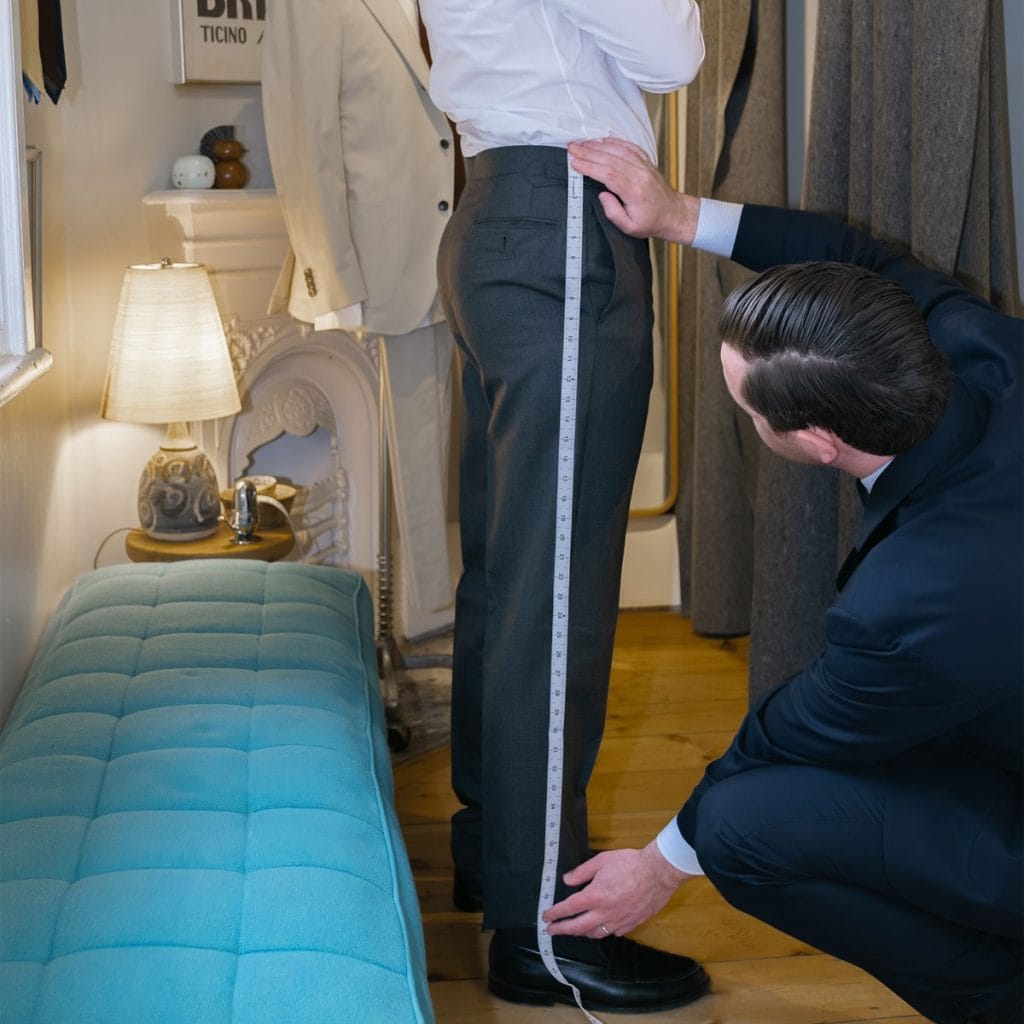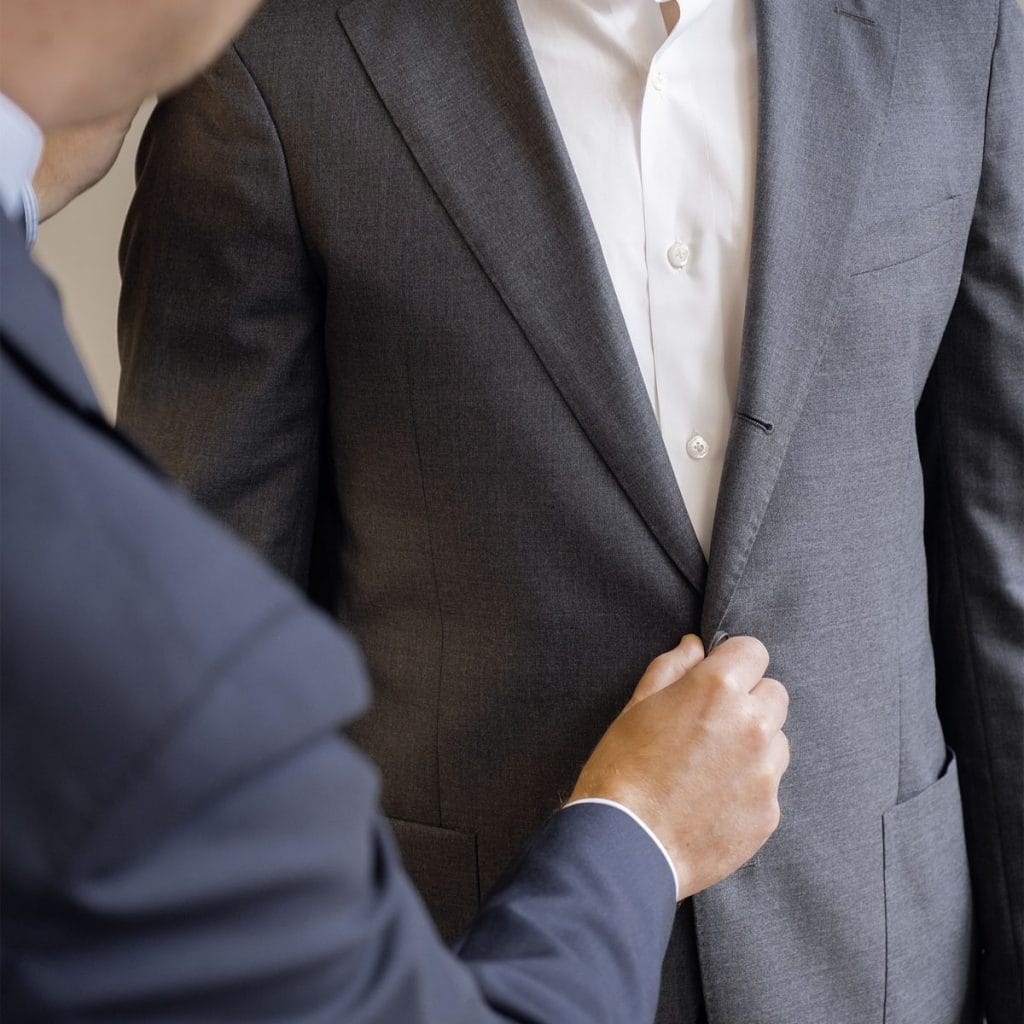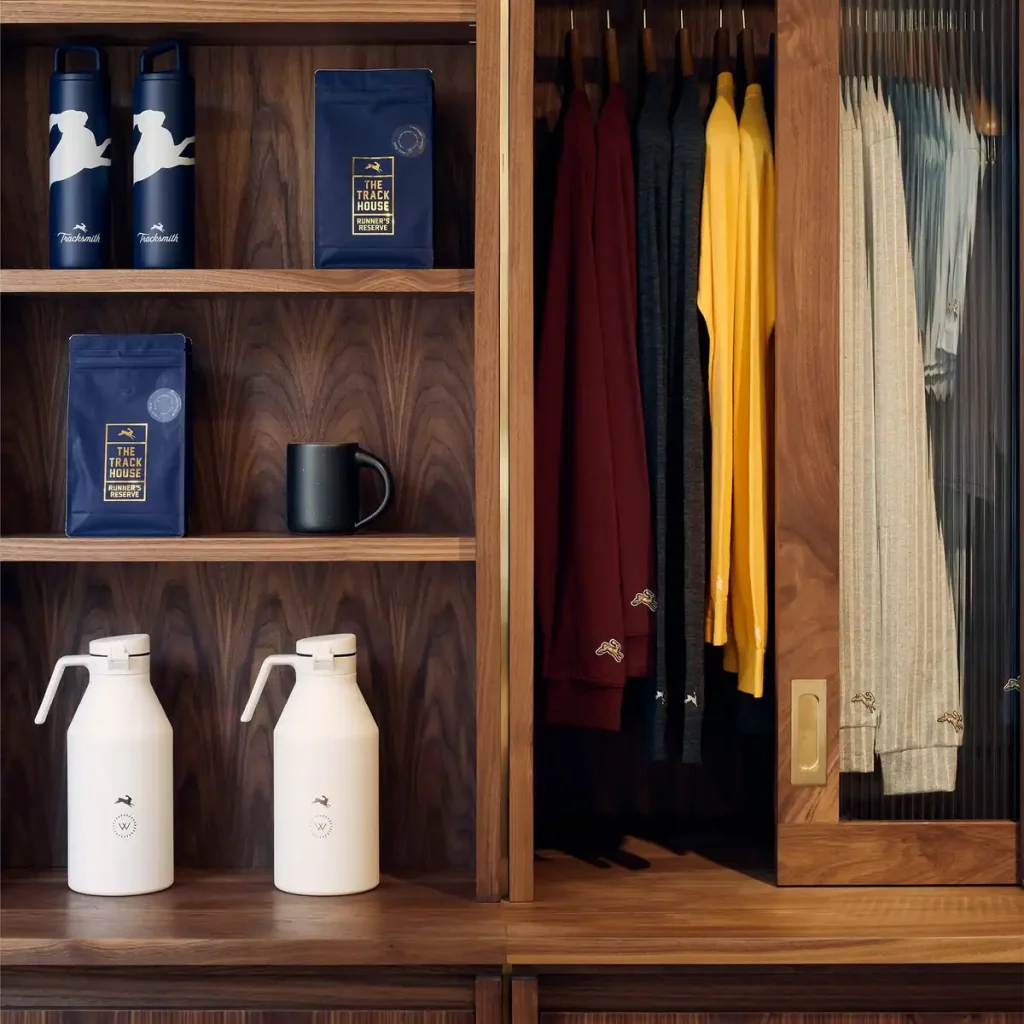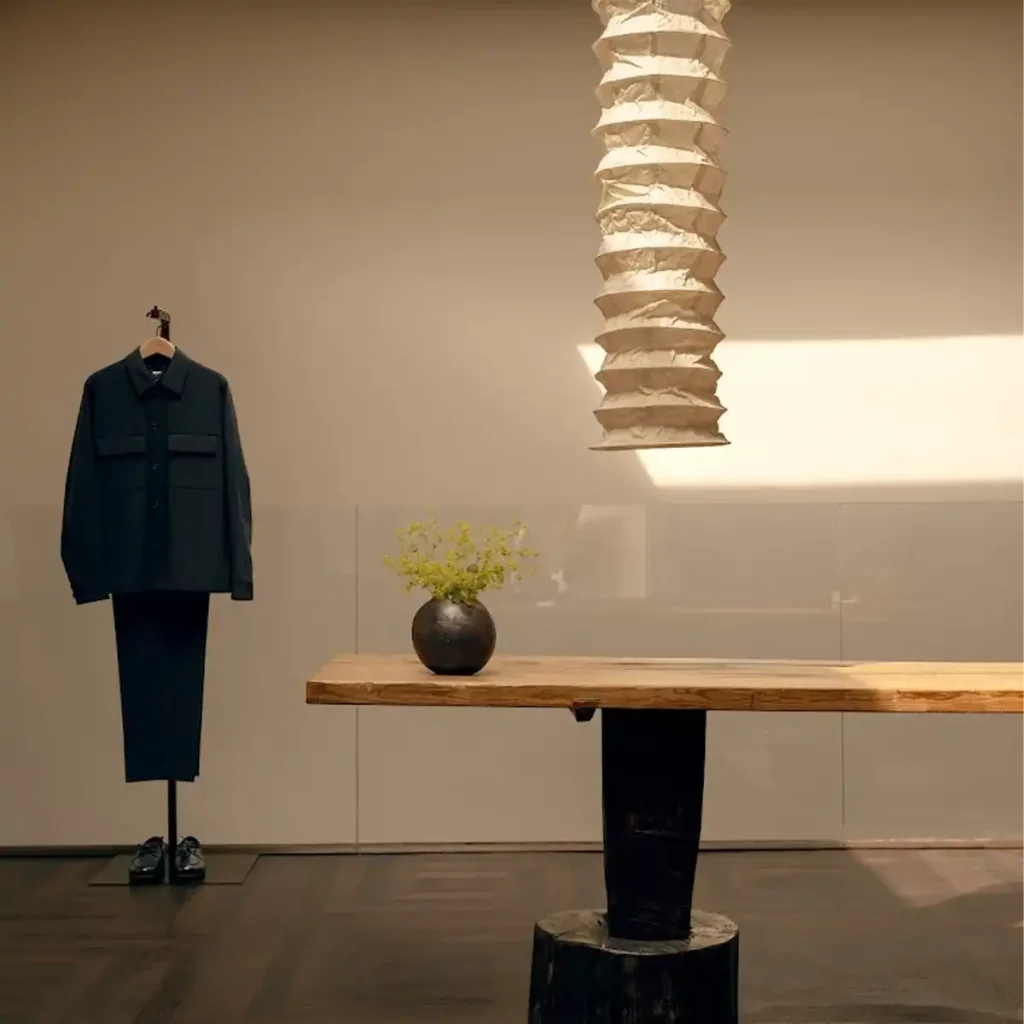Step off the roar of Oxford Street, turn north towards Chiltern Street, and London’s mood shifts. Car horns fade into birdsong, Georgian brickwork replaces neon glare, and the air smells faintly of Monocle Café’s Swedish cinnamon buns. It is here, on a short stretch of Marylebone pavement lined with specialist boutiques and cherry-red planters, that Trunk Clothiers has spent 15 years redefining what elegant menswear looks and feels like. Visitors Google “best menswear in Marylebone” or “quiet luxury London” and find themselves guided to this address, lured not by shouty logos but by the promise of immaculate fit, calm service and garments built to outlast fast-fashion fatigue. Walk through the door and the capital’s frantic tempo slips away: in its place comes soft jazz, warm oak shelving and the gentle confidence of a shop that knows precisely why it exists.
Chiltern Street and the Spirit of Marylebone
A single street can shape a brand’s identity, and few roads carry such influence as Chiltern Street. Once famous for uniform suppliers and police tailors, it grew into a magnet for contemporary craft after the 2013 arrival of the star-studded Chiltern Firehouse hotel opposite Trunk. Yet Trunk predates that celebrity whirlwind by three crucial years. Founder Mats Klingberg opened his doors in 2010, planting a flag for thoughtful retail when most luxury voices still shouted from giant department stores. The shop’s cosy footprint and slow-fashion philosophy chimed with Marylebone’s village feel, and the neighbourhood repaid the favour by giving Trunk a stage on which quiet excellence could shine. Locals now speak of the shop, café and hotel as a golden triangle of taste: browse, sip, dine, repeat.
Fun Fact: Chiltern Street once housed London’s police uniform depot, making today’s style credentials an unexpected twist in its sartorial timeline.
Genesis of an Idea
Klingberg’s route to menswear mogul was anything but direct. Born in Sweden, raised partly in Brazil, educated in Switzerland and New York, he blended hotel management, economics and Fashion Institute of Technology merchandising into a uniquely international CV. A decade at American Express then granted backstage access to the world’s largest luxury houses. He admired their craft yet spotted a gap between glossy flagships and soulless chains: men who disliked shopping had nowhere to buy beautiful clothes without intimidation. The 2008 crash pushed him to act. He quit, ordered stock before signing a lease and trusted that Marylebone would supply the correct address. The gamble worked. Today, his recruiting mantra still echoes that leap: hire staff who relish helping customers feel at ease, not selling at any cost.
Inside the Store Experience
Open the heavy glass door at 8 Chiltern Street and the first impression is domestic: soft lighting, worn Persian rugs, a hint of cedar and bergamot from Japanese incense. A low wooden bench outside invites lingering; inside, staff greet by name, remember last season’s jacket size and pour coffee without fuss. Reviews read like love letters: “properly attentive but never pushy”, “warm lighting, impeccable tailoring advice”. That service culture doubles as a strategic moat. Algorithmic ads can mimic product shots, but no online rival can replicate the moment a hesitant visitor tries a Boglioli sport coat and suddenly stands taller. Helping men discover confidence through fit is the shop’s true currency, and it circulates through loyalty that survives beyond trends.
Neighbourhood Synergy
Trunk’s influence spills onto the pavement. Klingberg is often seen chatting with passers-by, reinforcing Chiltern Street’s village vibe. From the doorway, a customer can map an entire afternoon: new loafers at Trunk, Monocle Café for a flat white, browsing rare magazines at Shreeji News, then cocktails at the Firehouse. Each business elevates the others, creating an ecosystem of understated sophistication that attracts well-travelled visitors and local creatives alike. For Marylebone landlords and planners, Trunk’s success proved that small, independent retail could anchor property values just as effectively as global flagships—and with far more charm.
Product Philosophy and Early Curation
Klingberg’s buying strategy reflects his passport. Soft Italian tailoring from Lardini sits beside Japanese denim from orSlow, Scottish cashmere from Begg x Co and New England cordovan loafers by Alden. Every label passes a simple test: will it still look and feel right in ten years? Early customers described the range as a “gallery for clothes”, and the art-dealer analogy holds. Limited runs mean scarcity; scarcity breeds anticipation; anticipation encourages customers to buy when they see the piece rather than risk missing out. Yet this model carries risk for the retailer, because restocks are never guaranteed.
The Trunk House Label: Enduring Essentials
When regular customers asked why a perfect mid-grey flannel trouser was always out of stock, Mats Klingberg decided to solve the problem himself. The result was the Trunk house label, launched quietly in 2014 with four pieces and now responsible for nearly half of annual sales. Each garment is produced in small, family-run factories in Italy and Portugal, where Klingberg personally inspects working conditions. He looks for bright lighting, calm conversation and the hum of machines that sound cared for. If staff do not smile, the contract is never signed. That policy builds a supply chain rooted in dignity as much as needle and thread.
Fabric choices demonstrate the same rigour. Jackets arrive in unstructured Harris Tweed, trousers in Super 120s Australian merino, knitwear in Scottish cashmere spun on water-powered frames. There is no seasonal logo switch-up or disposable slogan tee. The core collection stays stable, with incremental tweaks made only when real-world use suggests an improvement. Customers treat these pieces as components rather than trophies, returning each year to restock favourite silhouettes or introduce a new colour that slots straight into the wardrobe. In-store staff call it “precision everyday dressing”, a phrase that perfectly summarises Trunk’s aesthetic: calm, assured, built to last.
From Boutique to Worldwide
A single brick-and-mortar shop can nurture service culture, yet global reach requires pixels. Trunk’s first website launched in 2012, though the real inflection point came with a complete rebuild on Shopify Plus in 2019. Klingberg resisted the template temptation and invested in a bespoke design that mirrors the Chiltern Street atmosphere: muted earth tones, generous white space, editorial photography and copy that explains provenance rather than pressuring the sale. Each product page functions like a mini feature in Monocle – story first, transaction second – and conversion metrics prove the approach works.
International logistics match the polish. Worldwide express shipping via DHL, duties prepaid at checkout, and a dedicated US store that shows prices tax-inclusive. Returns are accompanied by handwritten notes thanking customers for trusting a small London shop thousands of miles away. Live-chat styling advice bridges time zones, while digital wardrobe consultations via video call replicate the communal mirror moment in Marylebone. The result: more than 60% of revenue now comes from outside the UK without sacrificing the boutique’s neighbourhood soul.


Community and Collaborations
Press coverage arrived organically, led by Financial Times How to Spend It, Esquire and the influential blog Permanent Style. Each feature drove new visitors, yet Klingberg’s focus stayed on peer credibility rather than mass reach. Collaborations follow the same path. For the tenth anniversary, he invited Alden, Camoshita and Gitman Vintage to create limited editions that riffed on house favourites – cordovan tassel loafers with hidden green linings, indigo camp-collar shirts in Japanese chambray. All sold out within days, but more important was the buzz among menswear insiders who now treat Trunk as a pilgrimage.
Pop-up events amplify that standing. Recent evenings have seen Bangkok retailer The Decorum hosting a Japanese Ivy exhibition in the shop basement. At the same time, Florence shoemaker Stefano Bemer measured London clients upstairs. These gatherings turn Chiltern Street into an unofficial trade show, blending commerce with conversation under one small roof. The ripple effect benefits neighbours too: Marylebone boutique shopping thrives when visitors plan full itineraries around a single, trusted anchor.
Made to Measure
For clients seeking sharper precision, Trunk offers an appointment-only Made to Measure service. The atmosphere is relaxed – espresso rather than sherry, soft jazz instead of hushed Savile Row formality – yet the fabric books read like couture poetry: Fox Brothers flannel, Holland & Sherry fresco, Loro Piana wish wool. A first fitting captures posture and shoulder slope; four weeks later, the finished garment arrives with minor tweaks handled in-house. Prices sit below West End bespoke yet above factory MTM, positioning the service as accessible expertise. Occasional logistics issues with overseas orders prompted tighter remote-fitting protocols, including detailed video guides and sample try-on garments shipped to distant customers. Transparency around these improvements reinforces trust and keeps five-star reviews flowing.
Redefining Luxury
In marketing workshops, the word “luxury” often dissolves into cliché, but Trunk restores meaning by re-anchoring it to substance. Quiet luxury is not a trend here; it is the operating system. Products must earn their price through tangible quality, ethical origin and longevity. The brand’s website highlights slow fashion principles with straightforward language: buy fewer items, wear them more, and repair when needed. Staff hand clients a simple care card with instructions for cedar-ball storage and moth-proofing knitwear. Sustainability audits show that over 80% of the range is made from natural fibres and 70% is produced within Europe, cutting transport emissions. These metrics appear in quarterly newsletters, proving that transparency can sell just as effectively as glossy campaigns.
Klingberg summarises the ethos with a line he repeats to new hires: “Our job is to help people feel like their best selves, not to chase trends.” That sentence guides buying meetings, social media captions and window displays alike. It also explains why Trunk weathered pandemic turbulence better than many competitors. Customers stuck at home still needed trustworthy basics; a navy cashmere crew neck speaks volumes on a video call.
Practical Visitor Guide
Planning a Marylebone menswear pilgrimage? Build a day around Trunk and let the neighbourhood do the rest.
- Arrive by 10:00 at Baker Street or Bond Street Underground stations, then wander south to Chiltern Street before crowds gather.
- Browse Trunk Clothiers at No. 8. Allow 45 minutes for a full rail-by-rail exploration and a second coffee poured by staff.
- Cross to Monocle Café for a kanelbulle cinnamon bun and Scandinavian roast.
- Stroll to Daunt Books on Marylebone High Street, one of London’s most photogenic bookshops, ideal for a travel guide or novel.
- Lunch at The Coach Makers Arms on Marylebone Lane for seasonal British plates and a pint in a Victorian carriage-builder’s workshop.
- Return to Chiltern Firehouse late afternoon for a courtyard cocktail, keeping an eye out for film-industry regulars.
- Evening fitting at Trunk’s Made to Measure suite, if booked in advance, then finish with dim sum at nearby Royal China.
The route blends culture, cuisine and style, echoing Trunk’s holistic view of what it means to dress – and live – well.
Conclusion: Quiet Confidence, Lasting Impact
Standing outside Trunk at dusk, streetlamps reflecting on wet brick and the smell of cedar still clinging to your new jacket, it is hard to imagine London without this hidden sanctuary. In fifteen years, the shop has reshaped perceptions of best menswear in Marylebone, showing that luxury can whisper rather than shout, that neighbourhood retail can influence global taste, and that authenticity secures loyalty more firmly than any marketing budget. As Londoners say, when something fits both body and spirit, it feels “spot on”. Trunk Clothiers is precisely that – proof that thoughtful craft and genuine hospitality never go out of style. He who wears well chooses well, as the old proverb goes, and Marylebone’s bastion of considered style makes choosing a pleasure.



